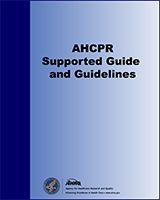NCBI Bookshelf. A service of the National Library of Medicine, National Institutes of Health.
Depression Guideline Panel. Depression in Primary Care (Volume 2: Treatment of Major Depression). Rockville (MD): Agency for Health Care Policy and Research (AHCPR); 1993 Apr. (AHCPR Clinical Practice Guidelines, No. 5.2.)
This publication is provided for historical reference only and the information may be out of date.
Guideline: The indications for ECT in the treatment of severe depression are a depressive episode in which symptoms are intense, prolonged, and associated with severe vegetative symptoms and/or a marked functional impairment, the presence of psychotic symptoms, or failure to respond fully to several adequate trials of medication. (Strength of Evidence = A.)
The panel recognizes that very few patients will require ECT, that it must be conducted by a specialist, and that side effects can be significant. However, ECT is an important option in selected cases.
In acute phase treatment, seven well-controlled and six additional randomized controlled trials revealed that ECT was generally effective in the short run for inpatients with severe depressive disorders. Predictors of a good response to ECT are similar to those of a good response to TCA medication. The presence of melancholic symptoms appears predictive of a positive response to ECT. Depressions accompanied by psychotic features respond better to ECT than to antidepressants or neuroleptics alone. For psychotic depressions, either ECT or the combination of antidepressant with neuroleptic medications may be equally effective. Some studies indicate that ECT appears effective in patients who have not responded to TCAs. Thus, if patients with severe depressions or melancholic features do not respond fully to antidepressant medication and have continued vegetative symptoms, or if they have not responded at all, ECT is a treatment option.
Electroconvulsive therapy may be advantageous over other treatments in patients (Yudofsky, 1981):
- Who have severe major depressive disorder that has not responded to adequate trial(s) of antidepressant medications.
- Who have psychotic depression.
- For whom antidepressant or neuroleptic medications pose a particular medical risk.
- Who have severe psychomotor retardation, suicidal behavior, or any clinical situation that requires a rapid response.
- Who have had a previous good response to ECT.
- Who have mixed manic episodes.
- Who have schizoaffective disorder that responds only partially to medication.
- Who are catatonic.
- Who have melancholic symptoms and have previously failed to respond to medications.
Randomized sham-controlled trials of ECT have demonstrated that it is highly effective for inpatients with severe forms of major depressive disorder, especially those with psychotic symptoms (Brandon, Cowley, McDonald, et al., 1984; Freeman, Basson, and Creighton, 1978; Gangadhar, Kapur, and Kalyanasundaram, 1982; Gregory, Shawcross, and Gill, 1985; Johnstone, Lawler, Stevens, et al., 1980; Lambourn and Gill, 1978; West, 1981). The available evidence suggests that ECT may be less effective in those with less severe forms of depression, though it may be an option for some (Avery and Lubrano, 1979). Two retrospective chart reviews of medication-resistant patients later treated with ECT (Howarth and Grace, 1985; Perry, Morgan, Smith, et al., 1982) and eight prospective open trials of patients with documented (observed) medication failure (DeCarolis, Gilberti, Roccatagliata, et al., 1964; Hamilton, 1982; Lykouras, Malliaras, Christodoulou, et al., 1986b; Magni, Fisman, and Helmes, 1988; Mandel, Welch, Mieskie, et al., 1977; Medical Research Council, 1965; Paul, Extein, Calil, et al., 1981; Prudic, Sackeim, and Devanand, 1990) indicate that ECT is effective for 50 to 70 percent of inpatients who have not responded to adequate medication trials. While this response rate is significant, it is lower than the response rate to ECT in nonresistant cases (Sackeim, Prudic, and Devanand, 1990), and it is equal to (Dinan and Barry, 1989) or better than that found with lithium augmentation (roughly 50 percent) or MAOI augmentation (roughly 50 percent) (Davidson, McLeod, Law-Yone, et al., 1978) of TCAs (Depression Guideline Panel, forthcoming).
Those responding to ECT should receive continuation treatment with antidepressant medications, given the 30 to 60 percent likelihood of relapse/recurrence without such treatment. The use of continuation medication or maintenance ECT has not been subjected to randomized controlled trials.
- Guideline: Acute Phase Management with ECT - Depression in Primary Care (Volume ...Guideline: Acute Phase Management with ECT - Depression in Primary Care (Volume 2: Treatment of Major Depression)
Your browsing activity is empty.
Activity recording is turned off.
See more...
